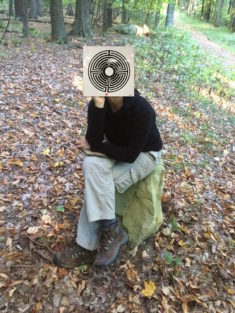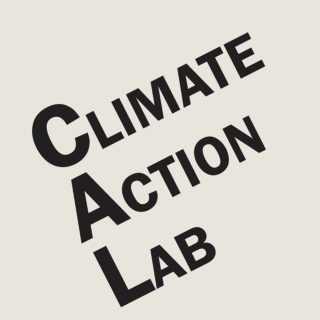Bibi Calderaro
Mitigating climate change by 2050, if not earlier, has become the milestone goal for climate action for non-governmental and grassroots organizations and for some governmental agencies alike (at municipal, state and national / international levels) [1]. This goal depends on the reduction of greenhouse gas emissions by 80%, particularly in the US. Referred to as “80x50,” [2] this goal requires transitioning from fossil fuels to electricity and hinges on generating electricity from renewable sources with low to zero carbon emissions. These renewable sources include wind, solar, geothermal and nuclear, and, in turn, necessitate a redesigning of the grid to make it more efficient.
Because environmental issues and the impacts of climate change are entangled with social inequities in complex ways, mitigating climate change must be addressed in ways that take environmental justice and social justice struggles hand in hand. In this post, I will be expanding on current solar energy initiatives—particularly the option of community-owned solar. This model addresses oppressive social and economic structures, by creating not only more sustainable forms of energy but also more equitable, regenerative social and infrastructural transformations.
As with any manifestation of power, whether material or immaterial, its control and distribution are key issues. This is the case with energy and particularly with sources of renewable energy such as solar. Centralized forms of energy production and distribution—large power plants and their distribution networks, which are controlled by big utility companies—have proven to be detrimental to the long-term, healthy functioning of socio-ecological systems in terms of efficiency, equality and sustainability. Transitioning from fossil fuels to sources of renewable energy is a perfect scenario through which to question how power is currently controlled and distributed, both in terms of energy for consumption and broader social forces.
Renewable energy sources are prime examples of how decentralizing power can challenge a business-as-usual model. Utility companies and their grids (like ConEd and National Grid) follow designs engrained in ideologies and vertical economic models, based on extraction and scarcity, which both directly and indirectly generate inequality. In order to not reproduce these processes as our societies transition to renewable sources of energy, the utmost care must be taken in considering how regenerative economic and energy models can create equity.
Community ownership of energy assets is a great example of this model. It addresses the redistribution of resources from the bottom up and looks at problems not as such but as possible solutions. One example is Community Solar models, which are more democratic and community-oriented forms of ownership of energy assets (the actual infrastructures of production and distribution). Distributed Energy Resources (DERs) are smaller energy-generating plants that are decentralized—which is to say, distributed—and closer to the sites of demand, thus, more flexible. Distributed energy generation typically utilizes renewable sources, lowering environmental impacts as well as better guaranteeing supply in extreme conditions.
Community-owned solar is different than regular residential solar options in that it addresses deep and complex issues of environmental and social justice. At the urban level, housing, poor job opportunities, gentrification and other social issues are directly entwined with environmental inequities, and they must be addressed together.
Great work on this front is being done by NYC-Environmental Justice Alliance, a 20+ year old organization that works relentlessly towards environmental and social equity in the city of New York by supporting the work of specific community organizations. One such organization is UPROSE, Brooklyn’s Sunset Park coalition, which has been working since the 1960s. With their motto, “Manufacturing Zones are the Engine of a Just Transition,” they propose Sunset Park’s industrial zoning as a potential site for manufacturing and assembling renewable energy parts. This would keep renewable energy jobs local and place power and decision-making within the Sunset Park community, which is rapidly changing as it faces the effects of mega-gentrification. UPROSE is currently planning for community residents to become the first cooperative members in the nearby solar farm, which they have slated for completion by winter of 2020.
Several other organizations promote some form of community ownership of distributed energy resources, with varying levels of collective ownership, which I’ll go into more detail about below.
What follows is a list of somewhat easy-to-navigate websites that include some aspect of a community-sharing model. One needs to pay particular attention to their language, as ‘community,’ ‘distributed’ and ‘shared’ have multiple meanings that do not necessarily refer to shared ownership and/or responsibilities. Elements of deception in the use of these words point to the dominance of a marketing model, where these words are now fashionable and used as branding to capture people’s attention and money without necessarily shifting control or addressing power differentials (this is what I refer to in the title of this limited guide as the “sharks” in the troubled waters of transition). The list below is not exhaustive and is only intended to provide some examples of what is possible in the transition towards renewables. Alerting the user to be attentive to the proposed economic models of each instance is part of learning these navigational skills. Typically reading the “about” and “mission” sections of these links are good ways to begin to notice who is who in this transition game.
- In NY State, advocacy for renewable energy and community owned/shared energy is found through the NY Energy Democracy Alliance;
- On the Community Choice Aggregates side in NYC, there’s Renewyorkcity;
- New York State Energy Research and Development Authority (NYSERDA) has a program called REVitilize where several community-shared models for energy renewables may be found;
- Harlem’s WEACT and Solar Uptown Now do not send 100% clear messages of where they stand in terms of community ownership, in spite of efforts to work in a community-oriented ethos. It seems they are part of a Solarize NYC campaign, spearheaded by NYSERDA, in which widespread outreach and education by local municipal governments are put forward as strategies to lower costs and increase the number of solar rooftops. (Solarize campaigns follow pretty traditional economic models of private ownership, perked by incentives). WeAct and Solar Uptown Now are partnering with SOLAR1, CUNY Solar (a key player in policy research and making) and UHab (an organization that is helping NYC residents install solar panels in low income coops). UHab offers some information on Community Shared Solar (CSS). CSS models are based on repurposing large underutilized surfaces, where solar panels are installed (for instance, turning rooftops of factories and public schools into Community Solar Farms). Residents from around the area then have the option to own a share of those panels’ production. Typically CSS is a wide designation with the minimum requirement that several unrelated participants from a community decide on purchase and ownership models [3].
- Daroga Power is a directly for-profit installer in the city that offers its services to CSSs. They claim to have installed 10,000 kW pipeline of NYC Community Distributed Generation (CDG) assets (infrastructure that is not centralized), making them the leaders in Community Solar development in the city. Their language remains within the tradition of the marketplace, as they are for-profit and not intending to address power differentials. Daroga’s subsidiary GoCDG might be a good option for tenants who are looking to turn to renewable sources of energy but do not own a roof nor the resources or interest to invest privately, although it does not offer a cooperative model of ownership.
More information on differing ownership models can be found at the following sites:
- Solarize NYC and Shared Solar offer maps and projects in the city within a private ownership model;
- Co-op Power from Massachusetts offers easy-to-follow diagrams and explanations of different cooperative models;
- For diverse cooperative models, CommunityWealth.org has reliable information in language that is not deceptive. It presents several solar Community Distributed Generation models of ownership in different parts of the US, including Namasté Solar in Colorado and Restart Solar in NYC.
As concluding remarks, I will focus on Restart Solar as a way to illustrate some of the opportunities and risks involved in the transition to renewables at a massive scale. In 2016, Restart openly took up transitioning to renewable energy as an opportunity to reduce severe social inequities like joblessness and poor workplace quality, environmental pollution and general public disinvestment in several communities. By building new infrastructure in low-income communities, reducing pollution in these areas, and creating new jobs, they argue that the transition to renewable energy is a form of bringing about social justice. At the time, they requested the implementation of more equitably distributed sources of income via solar infrastructure, following NYC’s 2014 80x50 resolution. Restart Solar’s goal is supposed to be attained by the government’s efforts to install 100 MW of solar panels in city’s public buildings. Despite these municipal buildings being the target of future infrastructure and Restart Solar adamantly requesting to take up this opportunity for true energy sustainability within communities, Restart is not proposing or advocating community-owned infrastructure. They are, however, critiquing Public Purchase Agreements (PPAs), the dominant financing model in the industry.
The complexities of tackling environmental and social justice issues at once indicate these endeavors necessitate both grassroots organization and policy that connect sustainable action with creating equitable economies and systems. Extreme care must be taken in the design and implementation of the regenerative initiatives that address transition within these parameters. My aim here is to further literacy in differentiating the many offerings of solar options, in order to bypass or resist the pitfalls of shark-infested waters.
I hope this guide helps the reader to understand that, by transitioning to renewable energy sources while remaining within business-as-usual economic models, one will only replicate oppressive systems (whether at the human or the more-than-human, in the micro or the macro levels). However, by becoming literate in community-owned solar, one might consider the possibilities of this particular moment to shift power differentials towards regenerative, equitable models of producing, distributing, and sharing energy.
[1] -https://ec.europa.eu/clima/policies/strategies/2050_en
- https://www.un.org/sustainable...




